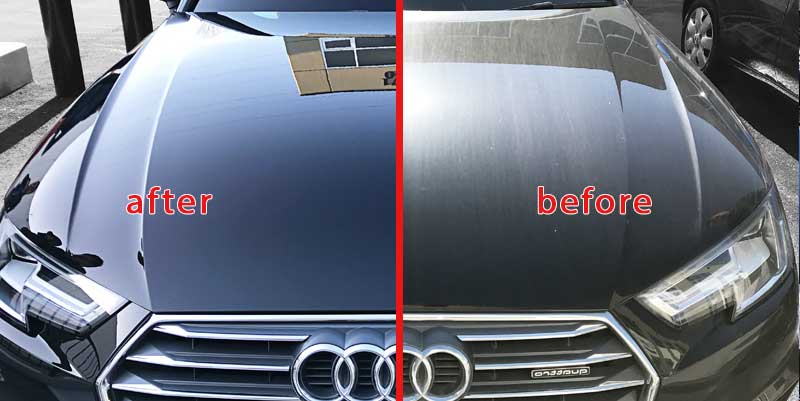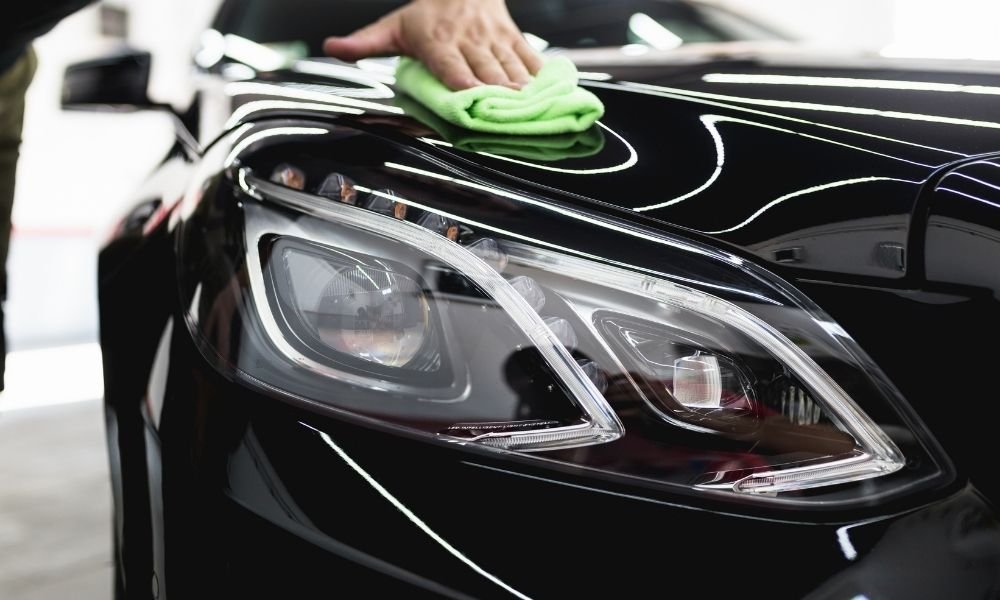Transform Your Automobile with Professional Ceramic Coatings San Jose
Transform Your Automobile with Professional Ceramic Coatings San Jose
Blog Article
Unveiling the Scientific Research Behind Ceramic Coatings: How Does It Work and Why Is It Above Traditional Alternatives?
Ceramic finishes have been gaining popularity in numerous markets for their phenomenal efficiency and longevity. The scientific research behind these finishings exceeds simple surface area protection, delving into the elaborate chemistry that makes them stand out from traditional choices (ceramic coatings san jose). Comprehending how ceramic finishes work and why they surpass conventional alternatives is crucial for those looking for to boost the durability and strength of their materials. So, what precisely establishes ceramic finishings apart, and just how do they attain such remarkable outcomes?
The Chemistry of Ceramic Coatings
In understanding ceramic finishes, diving into the detailed chemistry behind their composition is essential for understanding their performance and durability. Ceramic layers are primarily made up of silicon dioxide (SiO2), which creates a safety and strong layer when related to various surfaces. This chemical structure offers remarkable resistance to warm, chemicals, and corrosion, making ceramic coatings highly searched for for a large range of applications.
The chemistry behind ceramic layers includes the formation of covalent bonds between silicon and oxygen atoms, producing a stiff network that boosts the layer's toughness and durability. Furthermore, the visibility of various other aspects such as zirconium, titanium, and light weight aluminum additional improves the layer's properties, supplying raised hardness and adhesion to surface areas.
Understanding the chemical make-up of ceramic layers allows for the customization of formulations to match particular demands, whether it be for vehicle, industrial, or domestic objectives. By harnessing the power of chemistry, ceramic finishes proceed to pave the way for exceptional defense and performance in various industries.
Benefits of Ceramic Coatings

As an outcome, ceramic finishings make cleaning and keeping surfaces much simpler and less taxing. Generally, the multitude of advantages provided by ceramic layers make them a remarkable alternative contrasted to typical coating methods.
How Ceramic Coatings Bond
Ceramic finishings bond to surface areas with a procedure that entails molecular bond and chemical communications. When a ceramic finish is put on a surface area, it forms a strong bond by chemically adhering to the surface area at a molecular level. This bond is developed through the formation of covalent bonds, which are exceptionally strong and resilient. The ceramic finish's molecules penetrate the pores of the surface area, creating a limited grasp that withstands splitting up.
Moreover, the chemical interactions in between the ceramic layer and the surface area additionally improve the bond. ceramic coatings san jose. These interactions allow the ceramic coating to produce a constant and seamless layer externally, supplying excellent blog protection and resilience. Unlike traditional finishings that might sit on the surface without totally bonding, ceramic finishes develop a permanent bond that is immune to chemicals, UV rays, and harsh ecological conditions

In significance, the bonding mechanism of ceramic finishings ensures a long-lasting and effective safety his explanation layer that exceeds conventional finish choices. This superior bond adds to the resilience, scratch resistance, and longevity of ceramic finishes, making them a favored selection for different applications.
Longevity of Ceramic Coatings
The outstanding long life of ceramic coatings originates from their robust molecular adhesion and chemical communications with surfaces, ensuring a resilient protective layer that surpasses typical covering alternatives. When used, ceramic coatings form a strong bond with the substratum, producing a resistant barrier against various ecological stress factors such as UV radiation, chemicals, and abrasions. This bond is so protected that it can withstand the roughness of daily use without weakening or degrading promptly.
Unlike conventional finishes that might weaken gradually, ceramic coatings maintain their integrity for an extensive duration, offering long-lasting defense for the underlying surface area. The solid molecular structure of ceramic coatings stands up to breaking, fading, and peeling, ensuring that the surface remains shielded and visually pleasing for years ahead. This sturdiness not only minimizes the requirement for regular reapplications but likewise conserves money and time over time. In general, the exceptional durability of ceramic coverings makes them an exceptional choice for protecting a large array of surfaces in different applications.
Ceramic Coatings Vs. Conventional Choices
In comparison to conventional layer techniques, ceramic coverings provide a distinctive blend of sturdiness and protective abilities that set them apart in different surface security applications. Typical options such as wax or sealers give a short-term layer of security that can subside promptly, requiring constant reapplication. On the other hand, ceramic finishings develop a solid bond with the surface, creating a permanent or semi-permanent obstacle that is very immune to abrasion, chemicals, UV rays, and extreme temperature levels.
In addition, ceramic layers supply exceptional view hydrophobic homes contrasted to traditional layers. The hydrophobic nature of ceramic finishes triggers water to bead up and roll off the surface area, bring dust and pollutants with it. This self-cleaning result aids to maintain the surface area's cleanliness and gloss for extended periods, decreasing the demand for constant maintenance.
In addition, ceramic finishes have a thicker layer compared to standard options, offering boosted scrape resistance and protection versus small effects. This sturdiness makes sure resilient efficiency and aids maintain the visual appeal of the treated surface for an extended period.
Verdict
In final thought, the science behind ceramic finishings exists in their chemical structure and bonding homes, making them remarkable to typical alternatives. The advantages of ceramic coverings include increased longevity and protection for surface areas. By comprehending exactly how ceramic coverings work and their advantages over traditional options, one can make informed decisions when taking into consideration covering alternatives for various applications.
Unlike standard finishings that may rest on the surface area without totally bonding, ceramic coverings create a long-term bond that is immune to chemicals, UV rays, and extreme ecological conditions.
The exceptional durability of ceramic coatings stems from their robust molecular bond and chemical communications with surfaces, ensuring a resilient protective layer that goes beyond conventional finish choices.Unlike traditional finishings that may degrade over time, ceramic coverings keep their integrity for a prolonged period, offering resilient security for the underlying surface area.In contrast to standard coating approaches, ceramic finishes use a distinctive blend of durability and safety capabilities that establish them apart in numerous surface defense applications. By recognizing how ceramic layers work and their advantages over standard choices, one can make enlightened decisions when thinking about finish alternatives for various applications.
Report this page